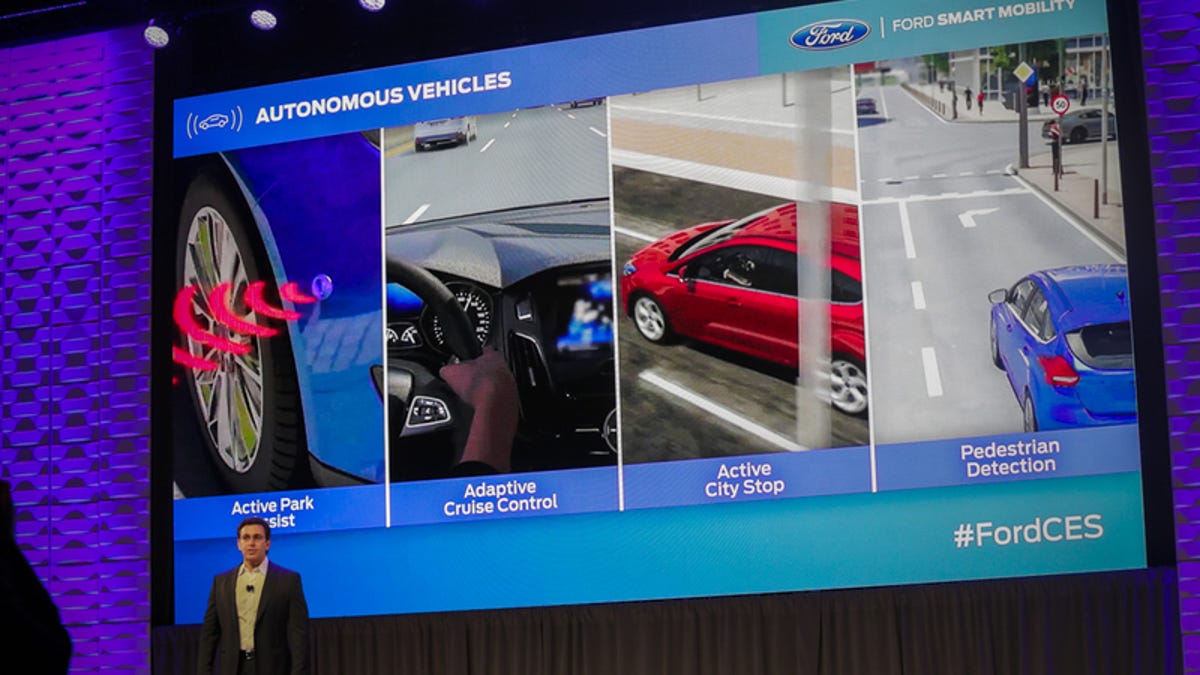All of these smart CES toys? We're going to need 5G
Commentary: From self-driving cars to virtual reality gaming, the innovations here will need a faster network. That's where 5G wireless technology comes in, even if it's still a few years away.
The cutting edge apps and products shown off at this year's Consumer Electronics Show will increasingly need a cutting edge wireless network. Our current 4G LTE speeds may not be enough.
That's why executives from Intel, Cisco, Ericsson and Qualcomm converged at the show's broadband panel in the Las Vegas Convention Center to debate the shape of 5G, the architecture for the next generation wireless network.
Their discussion will have a heavy impact on your wireless experience in the coming years, dramatically boosting your connection speeds to the point that your home broadband line seems like a slog. More importantly, many of the devices around you will benefit from the same network. Today's 4G networks, meanwhile, may not be able to handle many of the applications being promoted heavily at this year's CES, especially once they reach the mass market.
Self-driving cars, for example, will require a connection with virtually no lag. If you've tried to stream "Game of Thrones" on your phone, you know we're not there yet. Robotic surgeons can't stop working simply because of radio interference. All of that ultra high-definition 4K video? You're going to need a speedy network to stream it. If consumers are going to buy into these innovations, they're going to need to be cheap, reliable and readily available.
The good news: The basic structure of the new technology has become clearer over the last year, with the panelists agreeing that 5G will complement the existing 4G network, rather than replace it. The initial goal is to shoot for dependable and broad coverage of 100 megabits per second, although Ed Tiedemann, senior vice president of engineering at Qualcomm, said he expects speeds to reach 20 gigabits per second. By comparison, the fastest fiber optic-based wired networks offer 1 gigabit per second connections, and you have to be lucky enough to live in a select market where it's available.
The bad news: You probably won't see a full-fledged service until 2020.
Announcements of earlier 5G deployments by countries including Japan and South Korea, and in the US by Verizon, were met with skepticism by the participants. While some features of 5G may come sooner, "deployments before 2020 will not align with the standards," said Tiedemann.
Policymakers will also play a key role in the 5G rollout, in ways that may determine which countries are first to deploy and, as a result, develop the most disruptive innovations, they said. Regulators such as the US's Federal Communications Commission will need to free up even more spectrum, or the radio waves necessary to ferry your cat videos and emails over the air.
The executives also stressed a need for countries to start using the same kind of spectrum, so you don't have to switch phones or devices when going overseas. They admit that's a big challenge given the different agendas of each country and region.
If countries and regulators can't agree on how to enable global communications, maybe the engineers will have better luck.


